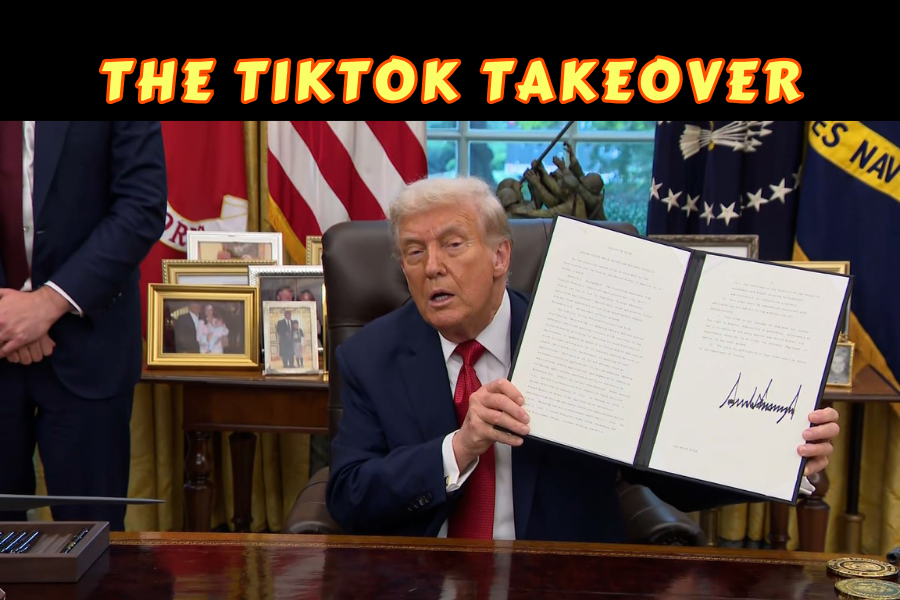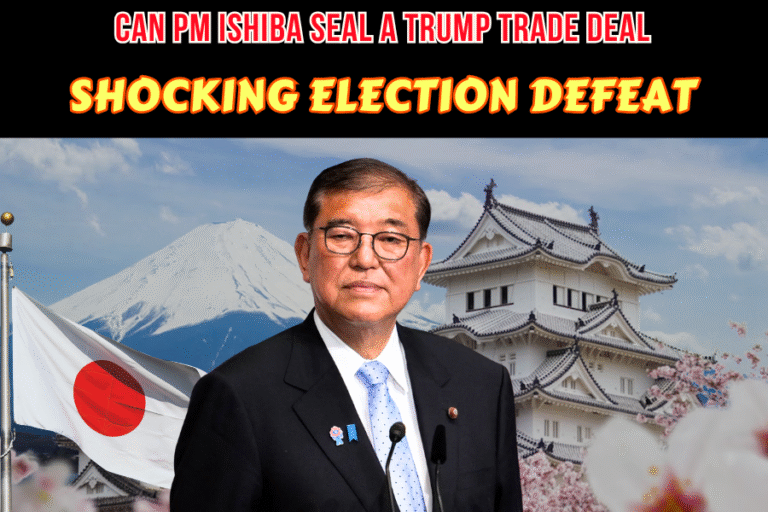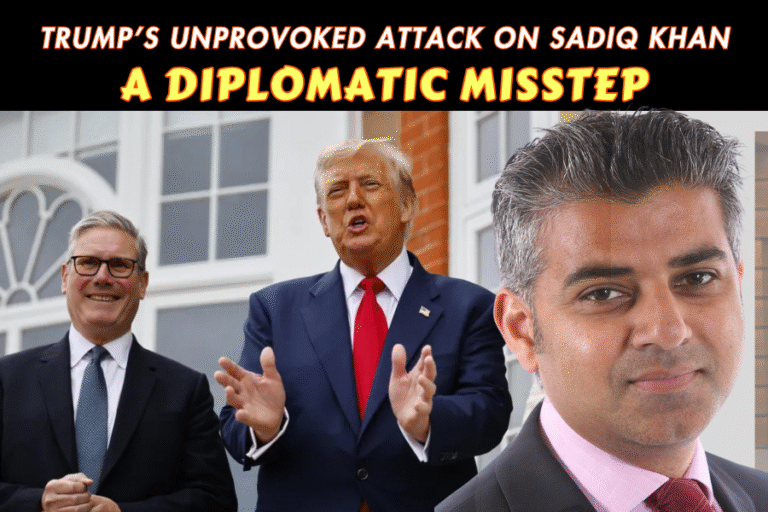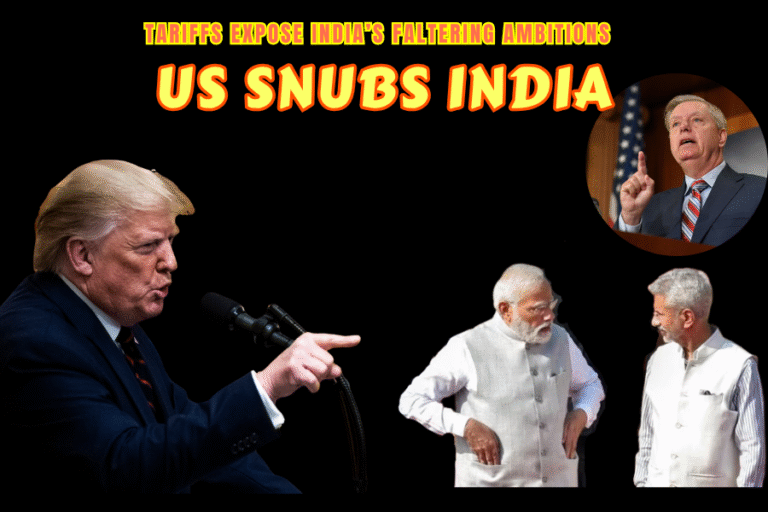(By Quratulain Khalid)
Introduction:
On September 25, 2025, President Donald Trump signed an executive order that officially greenlit the transfer of TikTok’s U.S. operations to American ownership. This wasn’t merely a corporate transaction; it was the culmination of a multi-year geopolitical struggle over data, influence, and the very future of the global internet. The signing marks a dramatic precedent in U.S.-China relations, signaling a new era where national security concerns can fundamentally reshape the ownership and operation of global technology platforms. This landmark deal doesn’t just save TikTok for its 180 million American users; it redraws the battle lines for digital sovereignty and influence in the 21st century.
This article will delve into the meteoric rise of TikTok from a nascent Chinese app to a global social media superpower, explore the deep-seated national security concerns that fueled the Trump administration’s relentless pursuit of a sale, deconstruct the intricate details of the new American ownership structure, and finally, analyze the profound implications of this takeover for users, the social media landscape, U.S.-China relations, and the future of a potentially fragmented internet.
I. The Meteoric Rise of a Social Media Superpower
To understand the magnitude of this takeover, one must first appreciate the unprecedented ascent of TikTok. Its genesis lies in Beijing, where ByteDance, a little-known tech giant founded by Zhang Yiming, launched Douyin in 2016. This short-form video app quickly became a sensation in China, pioneering a new format of entertainment and engagement. Recognizing its domestic success, ByteDance set its sights on global domination.
In 2017, ByteDance launched TikTok internationally and, in a strategic move, acquired the popular lip-syncing app Musical.ly for approximately $1 billion. By merging Musical.ly’s user base and features with TikTok’s advanced technology, they created an unstoppable force. The app’s growth was explosive, particularly among younger demographics who flocked to its endless stream of user-generated content, viral challenges, and creative tools.
The “secret sauce” behind TikTok’s unparalleled success was its revolutionary recommendation algorithm. Unlike older platforms that primarily relied on a user’s social graph (who they followed), TikTok’s “For You Page” curated an individualized feed based on immediate engagement – what videos a user watched, liked, shared, or commented on. This created an incredibly sticky and addictive experience, allowing even unknown creators to go viral overnight. The algorithm was a master of discovery, constantly introducing users to new content and communities, fundamentally changing how people consumed and created digital media.
This explosive growth didn’t go unnoticed. TikTok quickly challenged the dominance of established social media giants like Meta’s Facebook and Instagram, Snapchat, and YouTube. Its ability to capture and retain user attention, especially among Gen Z, sparked a fierce battle for market share, advertising dollars, and cultural influence. TikTok became a genuine threat to the old guard, prompting competitors to launch their own short-video features in a desperate attempt to keep pace. But as TikTok’s influence swelled, so too did the scrutiny from governments wary of its Chinese origins.
II. The Unraveling: Why the U.S. Government Targeted TikTok
The U.S. government’s scrutiny of TikTok began subtly but escalated rapidly, culminating in a full-blown national security crisis. At the core of the conflict were deep-seated fears stemming from TikTok’s ownership by ByteDance, a company subject to Chinese national security laws.
The primary concern revolved around data privacy. U.S. intelligence agencies and lawmakers worried that under China’s National Intelligence Law, ByteDance could be compelled by the Chinese Communist Party (CCP) to hand over the personal data of millions of American users. This data, which includes browsing history, location data, biometric identifiers, and private messages, could potentially be used for espionage, surveillance, or intelligence gathering against U.S. citizens, government officials, and military personnel.
Beyond raw data, a more insidious threat was perceived in TikTok’s powerful recommendation algorithm. Critics feared that Beijing could manipulate the algorithm to spread propaganda, censor content critical of the CCP, influence public opinion, or even destabilize democratic processes. The thought of a foreign adversary having direct access to an algorithm that shaped the media consumption of over a third of the U.S. population was deemed an unacceptable risk to national security and democratic integrity.
These concerns weren’t unique to President Trump. In 2024, the U.S. Congress, with bipartisan support, passed the “Protecting Americans from Foreign Adversary Controlled Applications Act.” This landmark legislation formally codified the U.S. government’s intent, mandating that ByteDance divest its ownership of TikTok’s U.S. operations within a specific timeframe or face an outright ban from American app stores. The law explicitly defined TikTok as a “foreign adversary controlled application” due to its ties to China. While the law faced legal challenges from ByteDance, it firmly established the legislative will to sever TikTok’s Chinese ownership.
Throughout this period, President Trump, both during his previous term and since his return to office in January 2025, consistently advocated for a sale rather than an outright ban. While acknowledging the severe national security risks, he expressed a strong desire to keep the popular app operational for its 180 million American users. His rationale was twofold: first, to avoid punishing the app’s vast user base and the creators who rely on it for income; and second, to ensure that the U.S. could capture the economic benefits and technological innovation associated with such a successful platform under American control, rather than simply eliminating it. The executive order signed on September 25, 2025, reflects this long-held preference for an American-led solution.
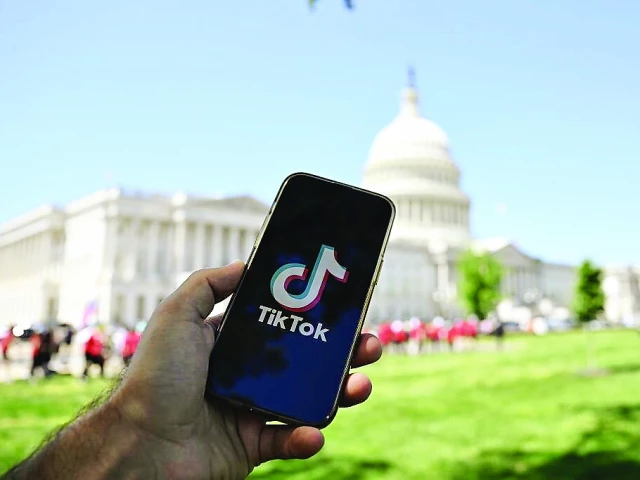
III. The Landmark Deal: Deconstructing the New TikTok U.S.
The executive order signed by President Trump yesterday formalizes a complex, multi-layered deal meticulously negotiated to address the core security concerns while keeping TikTok operational in the U.S. The result is the creation of a fundamentally new entity: “TikTok U.S.”
Under the terms of the executive order and the underlying agreement, TikTok U.S. will be majority-owned by a consortium of American investors, who will hold approximately 80% of the new company. This significant stake ensures decisive U.S. control over the platform’s strategic direction, operations, and, crucially, its data security protocols. ByteDance, TikTok’s original Chinese parent company, will retain a minority stake of less than 20%, significantly reducing its influence and preventing any single foreign entity from dictating the platform’s U.S. policies.
The roster of key players in this American consortium reads like a who’s who of U.S. industry titans. The tech giant Oracle has emerged as the leading force, playing a central role not only as an investor but also as the primary technology partner. President Trump specifically highlighted Oracle’s co-founder, Larry Ellison, as instrumental in forging the deal. Other prominent figures named by the President include media mogul Rupert Murdoch, whose vast experience in global media landscapes adds significant weight, and Michael Dell, CEO of Dell Technologies, bringing further tech expertise to the table. These figures provide not only capital but also deep operational knowledge and influence, signaling a serious commitment to the venture’s success and security.
The linchpin of this deal, designed to transform TikTok from a national security risk into a secure American platform, is the creation of a “Fort Knox” for U.S. user data and the re-engineering of its core technology. Under the agreement, Oracle will manage all U.S. user data on its secure cloud servers, physically located within the United States. This prevents data from being accessed or stored in China, effectively mitigating the primary concern about data exfiltration. Furthermore, the deal includes a provision for TikTok U.S. to license a copy of the powerful TikTok recommendation algorithm. This algorithm will then be meticulously retrained using only U.S. data and operated under U.S. oversight, severing any potential for manipulation or censorship from Beijing. This unprecedented level of technological detachment from its Chinese origin is a cornerstone of the agreement.
The executive order also established a new governance structure for TikTok U.S. The company’s board of directors will consist of seven members, with six being American citizens. This overwhelming American majority on the board is designed to ensure that the company’s decisions are aligned with U.S. interests and values, providing a robust layer of oversight against foreign influence.
President Trump confirmed that he had discussed the deal directly with Chinese President Xi Jinping, and crucially, had received his approval to move forward. This high-level diplomatic engagement underscores the geopolitical significance of the transaction and suggests a mutual interest in finding a pragmatic solution rather than escalating tensions further. The executive order also extends the enforcement of the 2024 ban for an additional 120 days, providing the necessary time for the complex legal, financial, and technical aspects of the divestiture to be fully finalized. This extension, the latest in a series granted since President Trump took office in January 2025, reflects his consistent strategy: to compel a sale and secure U.S. control, rather than eliminate a platform valued by millions of Americans.
IV. The Aftermath and the Future: What This Change Means for Everyone
The Americanization of TikTok is more than a simple change of ownership; it’s an event with profound and far-reaching consequences that will reverberate across users, the social media landscape, U.S.-China relations, and the very concept of a global internet.
For TikTok Users: For the 180 million Americans who rely on TikTok for entertainment, information, and income, the most immediate impact will likely be subtle, at least initially. The core user experience—the “For You Page,” the short-form videos, the creative tools—is expected to remain largely the same, as preserving this addictive formula is key to the platform’s continued success. However, behind the scenes, significant changes will occur. Content moderation policies, which have often been a point of contention and opacity under ByteDance, are likely to become more transparent and align more closely with U.S. legal standards and cultural norms. This could mean shifts in what content is promoted, suppressed, or banned. Users can also expect enhanced data privacy assurances, as their information will now be managed by an American company on U.S. soil, subject to U.S. laws.
For the Social Media Landscape: This deal fundamentally reshuffles the deck. Competitors like Meta (Facebook and Instagram), YouTube, and Snapchat, which have struggled to contain TikTok’s explosive growth, will now face a familiar foe but one operating under different constraints and with potentially different strategic priorities. The competitive pressure for innovation and user attention will remain intense, but the “foreign adversary” angle that TikTok’s rivals often leveraged will be gone. This could lead to a renewed focus on product innovation and less on geopolitical sparring. The deal might also inspire other tech companies to consider similar strategies for divesting sensitive operations to assuage national security concerns in various markets, potentially creating a more fragmented global internet where platforms adapt their ownership or data structures to local regulations.
For U.S.-China Relations: This takeover represents both a resolution to a major point of tension and a stark precedent. On one hand, it avoids an outright ban that would have inflamed tensions and deprived millions of users of a popular app. On the other hand, it demonstrates the U.S.’s willingness and capability to force the divestiture of a globally successful Chinese tech company deemed a national security risk. This will undoubtedly be viewed in Beijing as a significant concession and a victory for U.S. economic and technological nationalism. It sets a dangerous precedent for the “tech cold war,” suggesting that the U.S. is prepared to dictate the terms of operation for foreign technology on its soil. This could lead to retaliatory measures from China against U.S. tech companies operating there, further bifurcating the global internet into distinct, often adversarial, spheres of influence.
A Blueprint for the Future? The broader implications extend beyond TikTok. This deal could serve as a blueprint – or a warning – for other foreign-owned tech companies operating in the U.S., particularly those from perceived rival nations. Governments may increasingly demand similar concessions regarding data localization, algorithm transparency, and local ownership for services deemed critical infrastructure or central to public discourse. This signals a shift away from a truly open and borderless internet towards a more “nationalized” digital ecosystem, where trust and sovereignty are prioritized over seamless global integration. The era of unquestioned free flow of data and technology across borders may be drawing to a close, replaced by a more regulated and politically charged digital landscape.
Conclusion:
The signing of the executive order marks the end of a dramatic chapter in TikTok’s short but impactful history and the beginning of a new one. What began as a viral video app evolved into a geopolitical bargaining chip, a symbol of the broader struggle between the U.S. and China for technological supremacy and digital influence. President Trump’s resolute pursuit of a sale, culminating in this American-led takeover, doesn’t just save TikTok; it fundamentally alters the rules of engagement for technology, national security, and global commerce in the 21st century.
This deal is a stark reminder that in an increasingly interconnected world, digital platforms are no longer just tools for entertainment or communication; they are strategic assets. Their ownership, data handling, and algorithmic power have become central to national security debates and international relations. The Americanization of TikTok is not merely a corporate restructuring; it is a profound declaration of digital sovereignty, setting a powerful precedent that will undoubtedly shape the future of the internet for decades to come. The world watches now to see what this American-controlled TikTok will become, and what new challenges and opportunities will emerge in its wake.

